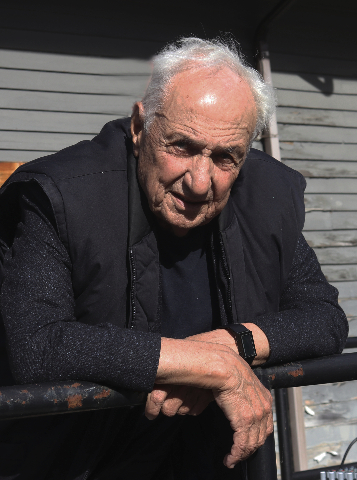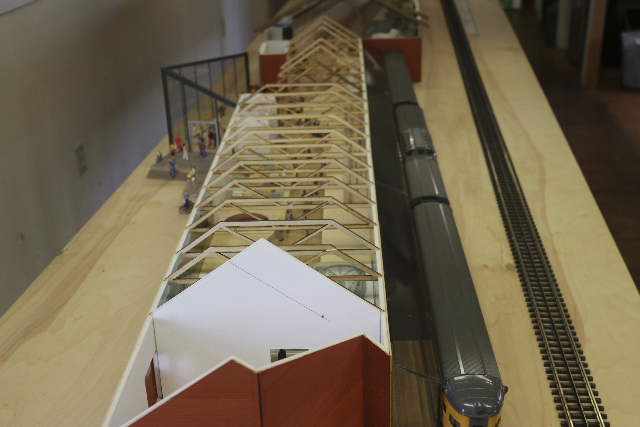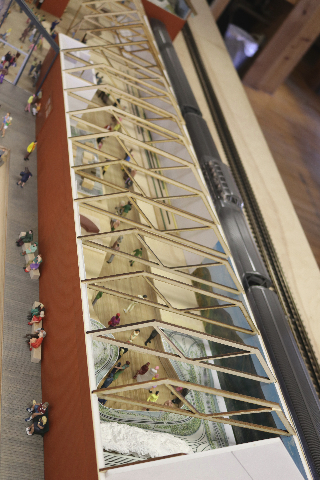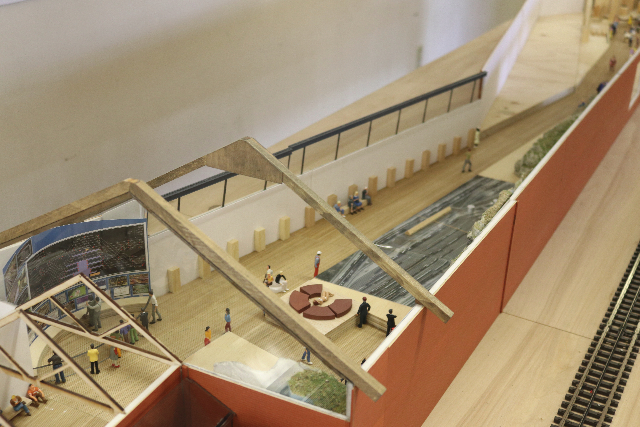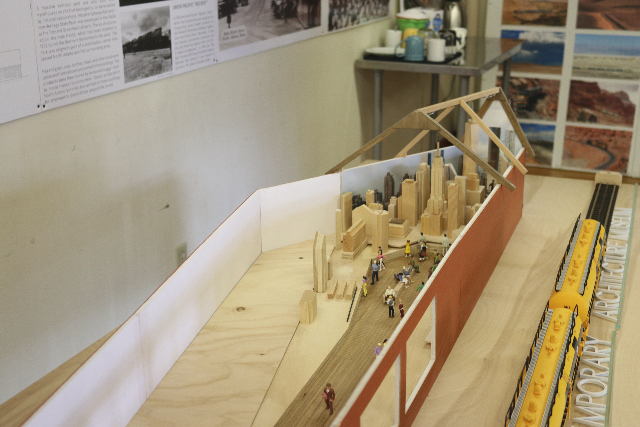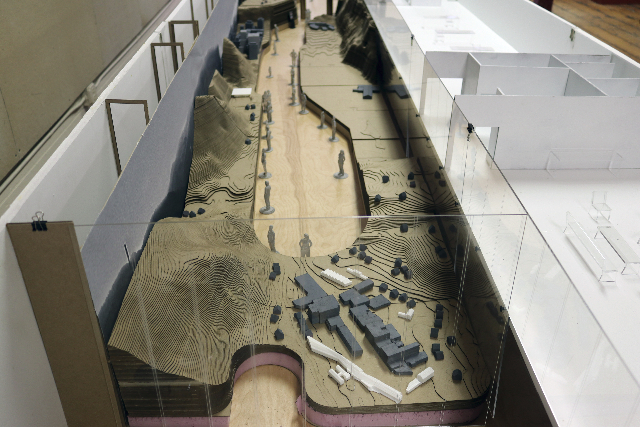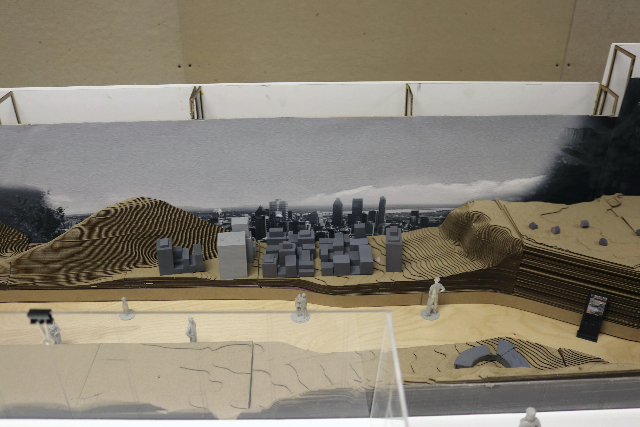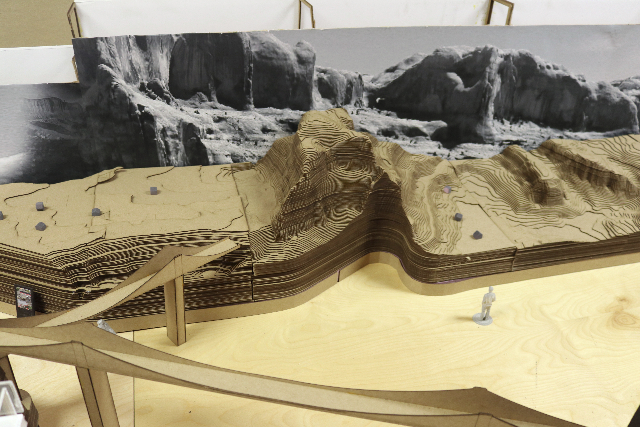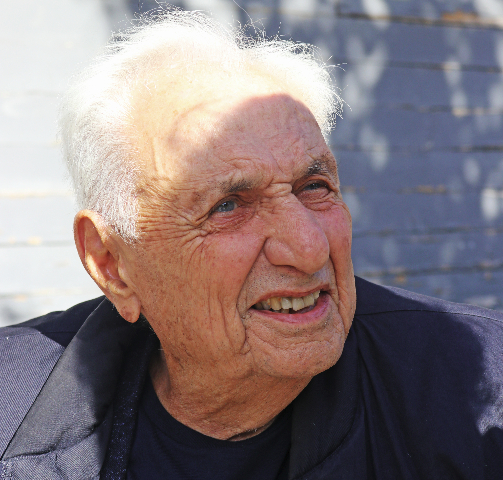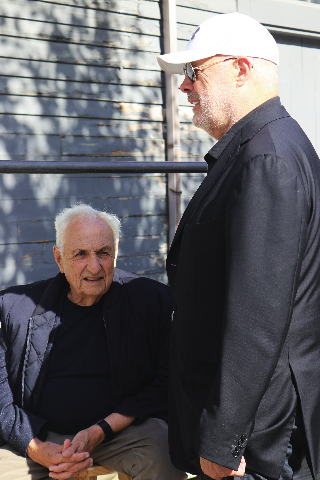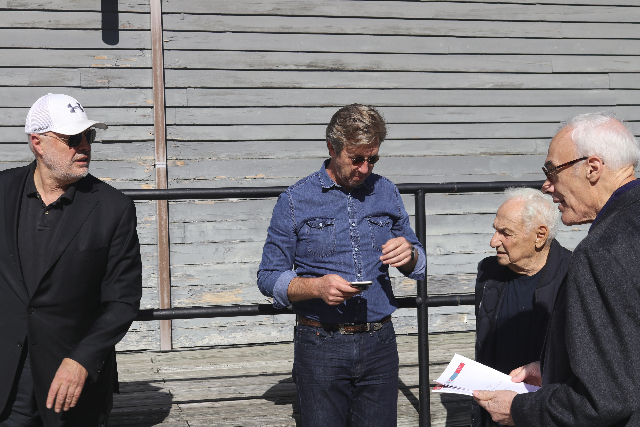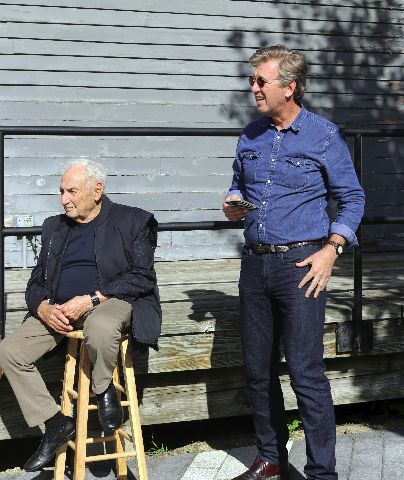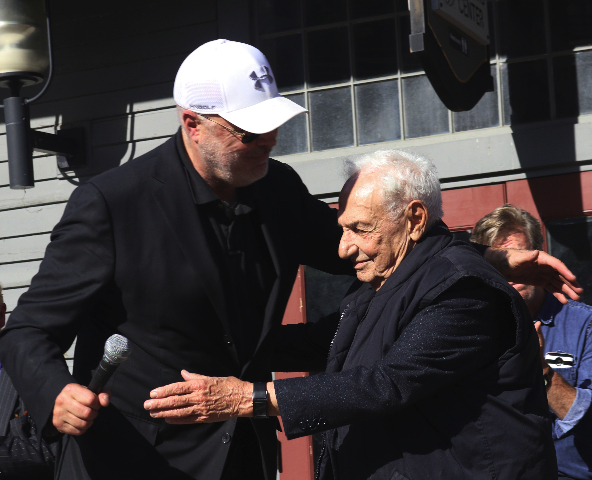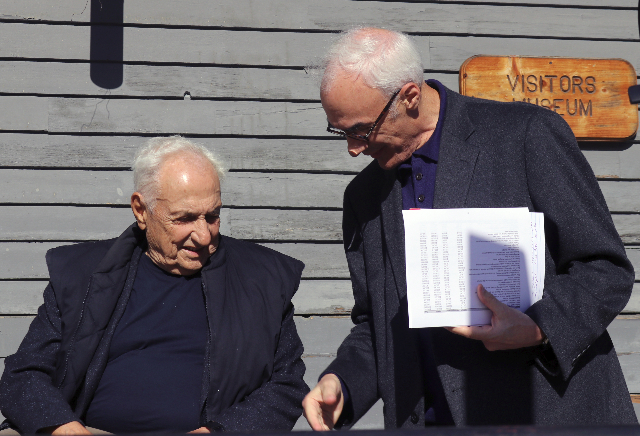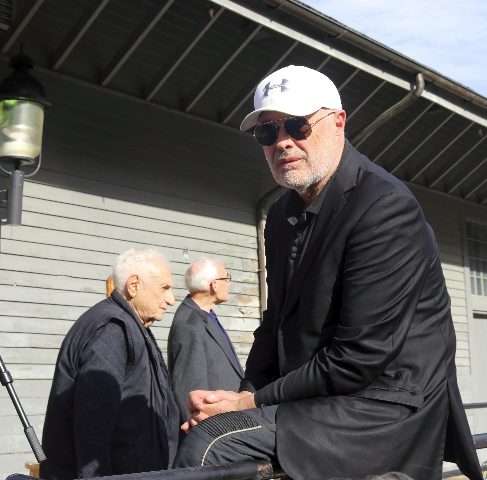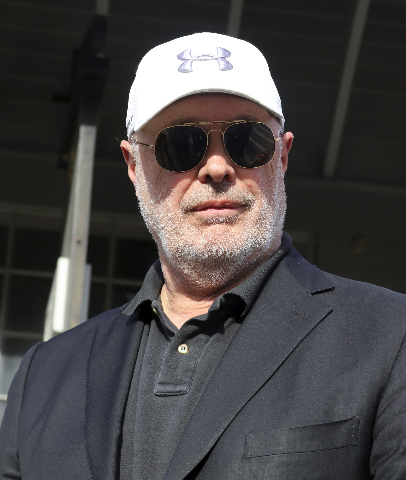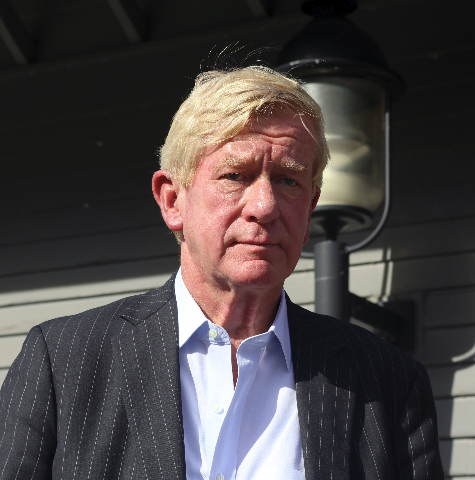Frank Gehry to Design Northern Berkshire Museum
Bilbao Effect Anticipated for North Adams
By: Charles Giuliano - Sep 02, 2017
With eleven projects in the works, and a sticker price of some $300 million, the Northern Berkshires cultural corridor connecting Williamstown and North Adams is about to have an extreme expansion.
Frank Gehry (born Frank Owen Goldberg in 1929), who is widely acclaimed as the world’s foremost architect, has been commissioned by longtime collaborator, the visionary museum director and developer, Tom Krens, to design the keystone of the project. This will be their fifth museum.
Yesterday, during a press conference at Heritage State Park, they unveiled Gehry's designs and displayed models of his and other works in progress.
The Extreme Model Railroad and Contemporary Architecture Museum has so far raised $2.5 million from private contributions and state grants; it expects to reach 50 percent of its goal by January with the balance by June 2018. Some $65 million is required for construction, purchase and razing of the Sons of Italy Building, and developing Western Gateway Heritage State Park, with 20 investors. The train museum will comprise 83,000 square-feet. For comparison the recently renovated Building 6 of MASS MoCA is 130,000 square-feet.
The commercial museum is expected to be profitable for investors. There are plans for clock, motorcycle and American art museums.
When Krens was director of the Williams College Museum of Art, and proposed development of what became Massachusetts Museum of Contemporary Art, he wanted Gehry to design the complex. That proved to be too costly.
Turning the MASS MoCA project over to Joe Thompson, who recently completed the build out of the vast campus, Krens left Williams to direct the Solomon R. Guggenheim Museum and Foundation for the next 20 years.
With an MFA and MBA he brought a new approach to issues for major contemporary art museums. His concept was that only a fraction of the collections of museums are actually on display. Add to that the enormous costs of developing major exhibitions.
Collaborating with Gehry they created a Guggenheim satellite museum for Bilbao in the Basque region of then economically depressed Northern Spain.
Without saying why, Krens asked him to meet in Bilbao. There the city leaders proposed a site that the architect immediately rejected. With humor he said that Krens was not kicking him under the table. “I had no idea I was applying for a job” he said amusingly.
They later settled on a suitable site and Krens described their frequent meetings as the work progressed. Similarly, Gehry expressed some surprise when Krens told him to get on a plane and come to North Adams. He was not anticipating being a speaker after a tour of the sites being developed.
Several years ago Krens, a fan of model trains, was building a system as a present for his son. To make it more realistic he wanted to include architectural models. Gehry recalled being asked for one which he sent then “I never heard from him again until recentlty.”
Arguably the Bilbao project, widely regarded as a masterpiece, was key in the ascendancy of the collaborators.
The conjecture is that they will bring an aesthetic and economic miracle to Northern Berkshire County.
In the first 12 months after the Bilbao museum was opened, an estimated $160 million was added to the Basque economy. Over $3.5 billion has been added to the region since the building opened. It gets an average of a million annual visitors.
As Gehry commened it has been so successful in recovery and rebranding of the region that Basque separatists have put down their arms. Prosperity is the best means to assuage dissent.
According to a study by Williams College professor of economics, Stephen Sheppard, the museum's construction could generate more than 2,000 jobs and add as much as $191 million a year to the local economy.
Speaking at the press conference he ran the numbers and discussed the data that was processed to generate the study. He estimated visitation at some 500,000 to 700,000 annually. Added to the attendance of Clark Art Institute, Williams College Museum of Art, Williamstown Theatre Festival and MASS MoCA that would represent a change from day trippers to weekend visitors.
Massachusetts Museum of Contemporary Art, also in North Adams, logged about 165,000 visitors last year. In nearby Williamstown, the Sterling and Francine Clark Art Institute drew 170,000 visitors in fiscal year 2016.
Shappard's projections may eclipse Lenox and Tanglewood as the epicenter for Berkshire tourism. Southern Berkshire County has the advantage of being an hour closer to New York. The critical mass of new development may well level the playing field and even tip the balance.
As Krens noted adding an extra day in the region represents an 800 % increase in economic impact. This was the original projection for MASS MoCA when it sought funding from the Commonwealth of Massachusetts. Until now that hasn’t happened.
Some 160,000 annual visitors have toured MASS MoCA and the Clark then returned to Southern Berkshire County, Lenox and Tanglewood, or left the region. The new plans will revitalize downtown North Adams with an array of attractions.
Attendance figures for 2017 are yet to be released. With the launch of Building 6 an increase is anticiated. That happened when the Clark reopened after its expansion. Its featured exhibitions, however, were less enticing than previously. It was not a blockbust summer for the Clark.
As Governor William Weld, the moderator of the conference observed, the epicenter of the Berkshires not only shifts north but evolves as the primary cultural tourism destination north of Boston and for upper New England.
When Krens first proposed MASS MoCA in the 1980s I spent a day with him as a journalist. With a huge ring of keys we toured then decrepit buildings. Back in his office he showed me charts and diagrams. One was a map with the museum at its center. There were circles radiating out that demonstrated driving time. Within three hours or so were vast potential populations including New York, Boston, New Haven, and Hartford.
Those projections remain valid with the additional incentive of much more to see. In addition to the train museum there are other projects on the drawing board.
That represents an immediate need for beds and an increase of the related hospitality industry.
Currently, he said, there are just two hotels in North Adams, Porches, and the Holiday Inn. In the models there is a new downtown hotel. It is sited on what is now a vast parking lot resulting from urban renewal which leveled half of the city. That area will be transformed into a park with other amenities.
Krens failed to mention that there are hotel/ motel/ spa and resort projects in varying stages of development. The Redwood Motel makover was to have been partly open for the Wilco curated Solid Sound Festival at MoCA in June. Through the summer progress has been slow as the cost of the project has increased. Plans are in the works for the Greylock and Blackinton Mills. Williams College bought the Williams Inn and is considering options for it as well as creating a boutique hotel on its campus.
Simeon Bruner, a pioneer of reuse architecture and the major designer of MASS MoCA, has acquired the Windsor Mill from the city of North Adams.
"After completion of construction, we predict a long-term addition of between 1,400 and 2,000 jobs, with the local economy producing between $125 million and $181 million more economic output," the economic study states. "This would have a transformative impact on the region."
In addition to designing the new museum Gehry will also take on the Mohawk Theatre as a potential performance center. That has long been a problem for mayors John Barrett III and Richard Alcombright who is ending his term on a sanguine note.
It was originally created by E. M. Lowe as a movie theatre. As such it does not have a stage suitable for performance or a back stage to load in sets. To date, options have been to remove seats and build out the stage. That reduces capacity for an already small theatre. The other option has been the more costly one of knocking out the back wall and expanding. There is nothing currently blocking that.
What Gehry comes up with will be closely followed. It has been questioned why the region needs another performing arts center? That changes, however, if North Adams becomes the destination that is being projected. If there are increased weekenders they will want another night of theatre and performances beyond Williamstown Theatre Festival. There is also extensive programming at MASS MoCA including the biannual Solid Sound Festival, and annual Bang on the Can and Fresh Grass events.
Crunching the numbers former Governor William Weld, a key player in making MoCA happen, observed that "If it draws 500,000-700,000 visitors that produces a for-profit entity 25 percent rate of return, which may not be in the stratosphere of the private equity world, but is plenty good enough for those investors."
Visiting the city it was reported that Gehry was viewing his models for the first time. They reveal the flow of the interior space. It will be the architect’s job to provide a signature sculptural exterior. Those designs will then be developed in detail by his firm.
It is usual for Krens to think big. The original concept for the train museum was to create a reuse of existing structures at Heritage State Park. It has now outgrown that with a quantum leap.
"If you go into Building Five at Mass MoCA, go all the way through Building 5, then go into Building 6 and go all the way to through Building 6 and then go 40 feet farther," Krens said, "That's what it's going to be in one space."
During his turn at the podium Thompson described how many are skeptical if not hostile to the contemporary that he displays. “But I have never met anyone who doesn’t like model trains…This project that Tom and his team are working on with Frank is going to inject a tremendous amount of life into North Adams, and therefore, into Mass MoCA, and we're really, really cheerleading for it."
The potential for a train museum compares to Miniatur Wunderland model railroad museum in Hamburg, Germany. That venue draws a million annual visitors. Yesterday it was described as smaller, with less material, lower ceilings, and more constricted space.
Viewing the model there is a comfortable, expansive flow. On one long wall, behind a diorama of a mountain range with trains, is a panoramic, I Max screen that can change the background in a spectacular manner.
At the end of the structure is a museum of architecture with large models of iconic structures like the Empire State Building. There are figurines in the model that convey a sense of the scale.
When the conference ended Krens and Weld lingered to take questions from the media.
Perched on a railing wearing shades and a signature baseball cap Krens elaborated on the new museum.
“This will be the world’s first great architectural museum” he said. “No museum has the space to show models. At MoMA, for example, they only collect and display paper and small models. They have no space to show and store what we will be collecting.”
Given that raising $300 million raises questions Krens offered no assurances to reporters. Not all projects pan out. The model train museum, for example, was originally planned for China.
Krens, now 70, left the Guggenheim in 2008. He has long maintained a summer and weekend residence in Williamstown. With these major projects closer to home he is able to cut down on the wear and tear of global travel.
The structures being developed represent a mix of non profits seeking state and foundation support as well as private donors, and commercial ventures seeking investors including museums, a hotel and brewery.
A money making proposal for Krens and investors is the creation of a Global Contemporary Art Museum at the Harriman and West Airport. For visitors there will be contemporary art to view with the variation that it is for sale. There is also storage space for inventory.
This is an interesting concept as high end galleries often appear to function like museums. It is not uncommon to mount major exhibitions with scholarly catalogues. These projects may entail loans and some expensive objects for sale.
There has been a blurring between high art and commerce. It is not uncommon for museum directors and curators to leave relatively low paying positions for better economic opportunities with major galleries and auction houses. That is facilitated by the confluence where patrons become clients. There have been instances, in violation of ethics, where museum curators have collected under the table fees for consulting and advising on acquisitions. What was once a dark secret is now common practice.
It is assumed that, as the world’s foremost former contemporary museum director, Krens has a formidable rolodex. What remains to be seen is whether his for profit museum is able to reel in the whales who mostly shop at international art fairs. Those who know that market well are skeptical that high rollers will frequent the region.
It is, however, a time for optimism. That was well expressed by Mayor Alcombright, "Because all of this happening, the city of North Adams is now positioned to be the place in Berkshire County, the place in Western Mass, and the place in New England, Mr. Gehry, thank you for being here today.
“I know you've done projects all around the world where your work is revered ... You've done work in LA, New York City, Hollywood, Barcelona, Paris, Frankfort, Prague, Dundee, Toronto, London ... How cool would it be for them to be in the company of the city of North Adams?"

